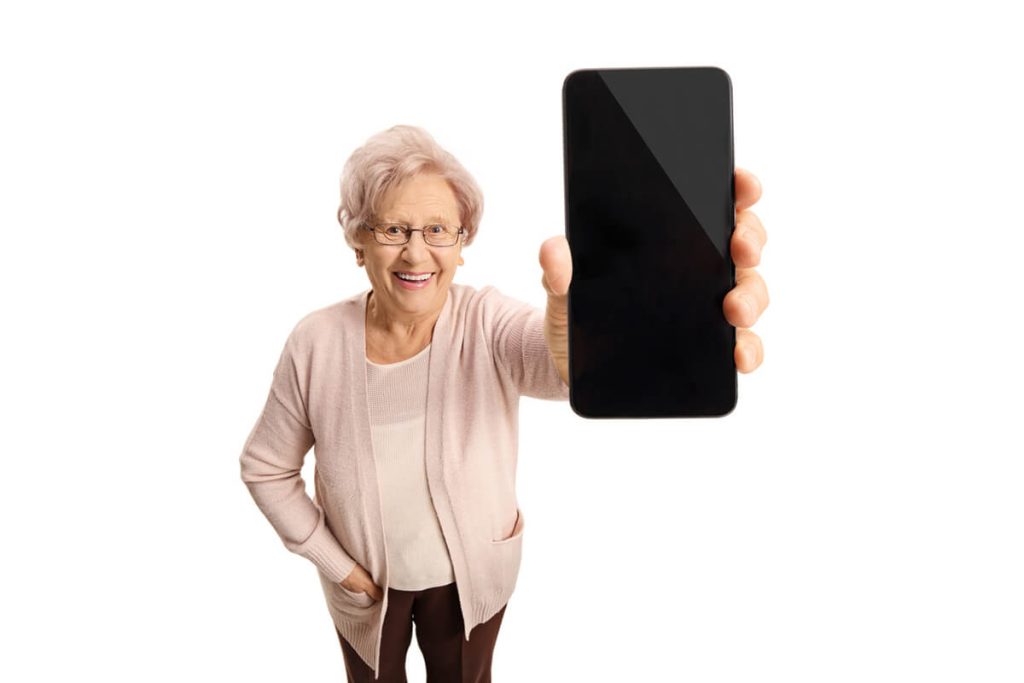In a world dominated by smartphones—devices that can take high-resolution photos, run complex apps, and connect us to global networks in seconds—feature phones (often called “dumb phones” or “mechanical phones” for their basic, button-operated design) seem like relics of the past. Walk into any electronics store, and shelves are filled with sleek smartphones; scroll through social media, and nearly every post assumes access to a smartphone. This ubiquity raises two pressing questions: Do people still use feature phones in 2024? And if so, are they exclusively used by the elderly? The answers, it turns out, are more complex than a simple “yes” or “no”—revealing that feature phones still have a place in modern life, and their users span far beyond just older generations.

1. First Question: Do People Still Use Feature Phones?
At first glance, it’s easy to assume feature phones have been rendered obsolete. After all, smartphones offer convenience that feature phones can’t match: GPS navigation, video calls, and instant access to information. But if we look beyond urban, tech-savvy circles, a different picture emerges. Reports from market research firms like Statista show that global feature phone sales still reach millions of units annually—280 million in 2023 alone. Why would anyone choose a device that can’t even run Instagram or Google Maps?
One key reason is reliability for specific needs. For many people, a phone’s primary purpose is still making calls and sending texts—and feature phones excel at this. They have far longer battery life than smartphones: a typical feature phone can last 3–7 days on a single charge, compared to a smartphone’s 1–2 days. This makes them ideal for use as “backup phones”: busy professionals often carry a feature phone alongside their smartphone, ensuring they can still make emergency calls if their main device dies. Hikers, campers, and outdoor workers also favor feature phones—their durable, button-operated design is less likely to break if dropped, and their long battery life means no need to carry portable chargers in remote areas.
Another factor is affordability. Smartphones can cost
500ormore,butfeaturephonesoftensellfor50–$150. In low-income regions—such as parts of Sub-Saharan Africa, South Asia, or rural areas of developing countries—this price gap is critical. For families living on limited budgets, a feature phone allows them to stay connected without the financial burden of a smartphone or expensive data plans. Even in wealthy countries, students or low-wage workers may opt for feature phones to avoid monthly smartphone bills, using public Wi-Fi or shared devices for occasional internet access.
Privacy is also a growing concern. In an era of data breaches and targeted advertising, some users distrust smartphones’ constant data collection. Feature phones lack advanced sensors and app ecosystems, meaning they collect far less personal information. A 2022 survey by Pew Research Center found that 12% of U.S. adults who use feature phones cite “privacy” as their top reason—they prefer a device that doesn’t track their location, browsing habits, or app usage. For these users, feature phones aren’t just a “basic” choice—they’re a deliberate stand against digital surveillance.
So, do people still use feature phones? The answer is clearly yes. Their simplicity, durability, affordability, and privacy benefits keep them relevant for millions—even in a smartphone-dominated world.

2. Second Question: Are Feature Phones Only for the Elderly?
The most common stereotype about feature phone users is that they’re all elderly—people who struggle with smartphones’ touchscreens, complex menus, or app updates. There’s some truth to this: many older adults do prefer feature phones for their ease of use. But to assume only the elderly use them is to ignore a diverse range of users with unique needs.
Let’s start with the elderly population, as they are indeed a significant group. For seniors who grew up with button phones, smartphones can feel overwhelming. A feature phone’s large buttons, simple interface (no swiping or app downloads), and dedicated “emergency call” buttons align with their needs. A 2023 study by AARP found that 35% of adults over 65 in the U.S. use feature phones, with 78% saying they “don’t need” a smartphone’s extra features. For these users, a phone’s purpose is to call family or doctors—not to take selfies or scroll TikTok. This preference isn’t about “being bad with tech”; it’s about choosing a device that fits their lifestyle.
But what about younger users? Surprisingly, a growing number of teens and young adults are adopting feature phones as a way to combat smartphone addiction. In countries like Japan, South Korea, and the U.K., “digital detox” trends have led teens to ask their parents for feature phones instead of smartphones. A 2024 survey of U.K. teenagers by Ofcom found that 18% of 13–17-year-olds use feature phones to “limit screen time”—they want to avoid the distraction of social media or gaming during school hours, using the feature phone only to text their parents. Some young professionals are also joining this trend: busy lawyers, teachers, or artists use feature phones during workdays to stay focused, switching to a smartphone only in the evening for personal use.

Then there are users with specific practical needs. For example, parents of young children often give feature phones to kids aged 8–12. A feature phone lets a child call home in an emergency without the risk of them accessing inappropriate content, spending money on in-app purchases, or becoming addicted to games. Delivery drivers, construction workers, and farmers also favor feature phones—their rugged design can withstand dust, rain, or drops, unlike smartphones’ fragile touchscreens. A delivery driver in Berlin told a local news outlet in 2023: “My smartphone breaks every 6 months from being dropped in rain or hit by packages. My feature phone has lasted 3 years—why fix what isn’t broken?”
Even travelers use feature phones. When visiting foreign countries, many people buy cheap local feature phones with prepaid SIM cards. This avoids expensive international roaming fees on their smartphones, allowing them to make local calls or send texts without risking their main device’s security (e.g., theft or data theft).
So, are feature phones only for the elderly? No. They’re used by teens detoxing from social media, parents managing kids’ screen time, outdoor workers needing durability, travelers saving money, and privacy-conscious adults. The elderly are a key group—but they’re far from the only one.
3. What Does This Mean for the Future of Feature Phones?
If feature phones have such a diverse user base, will they continue to exist? It’s unlikely they’ll ever replace smartphones, but their niche market seems secure. As long as there are people who value simplicity over complexity, affordability over advanced features, or privacy over convenience, feature phones will have a role to play.
In fact, some tech companies are adapting feature phones to modern needs. Nokia, for example, released the Nokia 3310 5G in 2023—a feature phone with basic internet access (for email or simple browsing) but still no app store. This hybrid design caters to users who want a simple device but need occasional internet access, bridging the gap between traditional feature phones and smartphones.
The key takeaway is that “usefulness” in technology isn’t just about how many features a device has—it’s about how well it fits the user’s life. A smartphone may be perfect for a social media influencer, but a feature phone is perfect for a hiker, a senior, or a teen trying to focus on school.

Conclusion
Do people still use feature phones? Yes—millions, for reasons ranging from affordability to privacy. Are they only for the elderly? No—their users include teens, parents, workers, and travelers, each with unique needs. The myth of feature phones as “only for old people” comes from oversimplifying who uses technology and why. In reality, the best device is the one that does what you need it to do—no more, no less. For many, that device is still a feature phone. As long as this remains true, feature phones will continue to coexist with smartphones, proving that simplicity never truly goes out of style.
